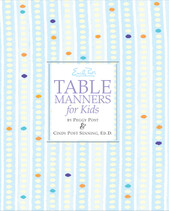
Flag Etiquette for Memorial Day Weekend

The American flag is treated with the same respect as a living entity and never dips to any person or thing. It is the premier symbol of our patriotism and proclaims our country's commitment to freedom. The rules and customs governing the flag's care and display are something that all citizens of the United States can learn and employ.
Care of the Flag
The American flag should always be handled respectfully, and should be carefully protected in storage and in use so that it won't be damaged. Every precaution should be taken to prevent it from becoming soiled, tattered, or torn. It should not touch the ground, water, or floor. When handling the flag don't let it brush against other objects.
If the flag gets wet, it should be smoothed and hung until dry—never roll, fold, or put it away while still damp. Flags should be dry-cleaned, not washed, and kept in good repair. It's fine to trim and repair ragged edges or re-sew stripes that have separated in the wind.
According to the United States Flag Code, Title 4, Chapter 1, "The flag, when it is in such a condition that it is no longer a fitting emblem of display, should be retired and destroyed in a dignified way, preferably by burning." Many American Legion Posts provide this service.
Raising and Lowering the Flag
The flag should be unfolded or unfurled and raised briskly; it should be lowered slowly and solemnly. Always display the flag with the blue union up, aloft and free. Flying the flag upside down is a distress signal.
Flying at Half-Staff
When flown at half-staff, the flag should be hoisted to the peak for a moment and then lowered to the half-staff position; the flag should again be raised to the peak before lowering for the day. On Memorial Day the flag is displayed at half-staff until noon and then raised to full-staff until sunset.
On land a flag is flown from a staff (pole); at sea a flag is flown from a ship's mast. So, correctly, a flag is at "half-mast" at sea and "half-staff" on land.
Displaying the Flag
American flags are out in force on holidays—expecially the Fourth of July, Memorial Day (see above), Flag Day (June 14), and Veterans' Day (November 11). It's proper to fly the flag every day of the year, weather permitting, between sunrise and sunset. It may also be flown at night as part of a patriotic display as long as it is illuminated. Customarily the flag is not flown in inclement weather unless it is made of all-weather material.
When the flag is flown from a staff projecting horizontally or at an angle from a window sill, balcony or the front of a building, the union of the flag should go all the way to the peak of the staff, except when flown at half-staff.
The flag is suspended vertically over a street, with the union to the north on an east-west street; to the east on an east-west street.
When the flag is displayed but not flown from a staff, it should be hung flat against a wall (not tucked or draped), whether indoors or out. The union should be uppermost and to the flag's own right, meaning on the observer's left. In a window it should be displayed in the same way, with the union to the left of the observer in the street.
When the flag is used on the chancel or platform in a house of worship, it is displayed from a staff and placed on the clergyperson's right (any other flags are on his or her left). When displayed in the seating area of a house of worship, the flag is on the congregation's right as they face the front.
When used to cover a casket the flag is placed so that the union is at the head and over the left shoulder of the deceased. The flag should not be lowered into the grave or allowed to touch the ground.
On a power boat the flag is called an ensign, and is flown from 8 a.m. until sunset. It flies from a staff at the stern when the boat is anchored, or if the boat has a gaff, may be flown from the gaff when under way. The ensign is flown from the stern of a sailboat in the harbor or under power, and may be flown while the boat is under sail.
On an automobile the flag is called the standard, and is flown on a small staff affixed to the right front bumper, in line with the fender and with the union toward the front. The staff should be tall enough so that the flag clears the car hood.
With Other Flags
When the flag of the United States is flown on the same flagpole with flags of other states or cities, or with pennants of societies, the U.S. flag is always at the peak. When flown from adjacent staffs, the national flag should be hoisted first and lowered last.
When carried in a procession or parade with another flag or flags, the American flag should either be on the marching right, or when there is a line of other flags, in front of the center of that line.
When a number of flags of states or cities are grouped and displayed from staffs, the U.S. flag should be at the center or at the highest point of the group. If the flags of two or more nations are displayed, they should be flown from separate staffs of the same height, and the flags should be of approximately equal size. International usage forbids the display of the flag of one nation above that of another nation in times of peace.
Wearing a Flag Lapel Pin
A U.S. flag lapel pin should be worn on the left lapel.
Saluting the Flag
Whenever the flag passes by, as in a parade, U.S. citizens pay it their respects by standing at attention and placing the right hand over the heart. Men remove their hats and hold them, in their right hands, over their hearts. This rule also applies to women wearing sports caps. Men and women in the armed forces give the military salute as the flag passes. Veterans and service personnel out of uniform may give the military salute or place the right hand over the heart.
While citizens of other countries are not expected to salute the U.S. flag, sing our national anthem, or recite the Pledge of Allegiance, it is respectful for them to stand quietly while the flag passes, the anthem is sung, or the pledge is recited.
For more information on flags, visit: https://www.usa.gov/flag











